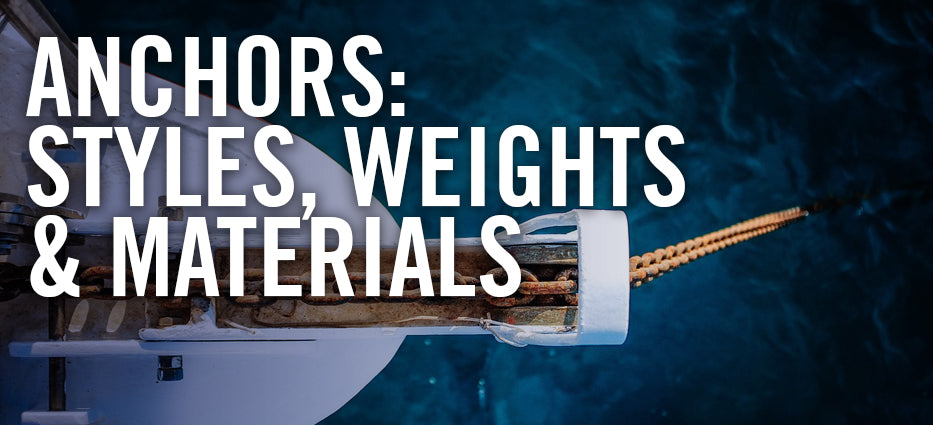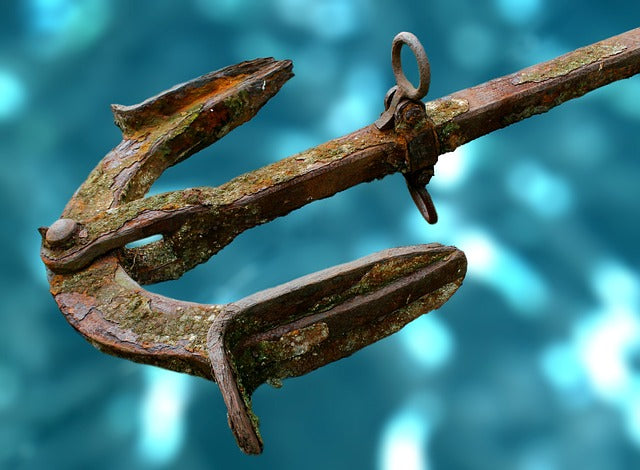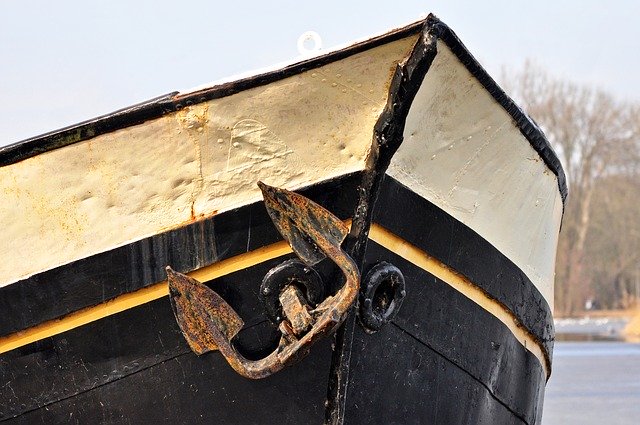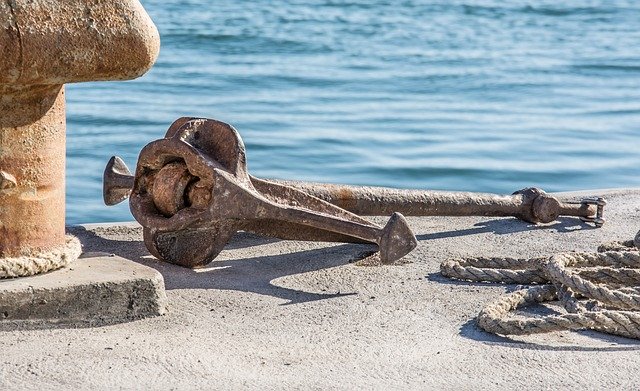Anchors: Styles, Weights, and Materials

Have you ever stopped to think about your anchor kit? It's a very important piece of nautical equipment that doesn't get shown a lot of love. Most people drop it and hoist it without much regard for how it performs.
The majority of boat owners will never give a second thought to their anchor's style, weight, and materials until it is time to buy a new one or refinish an old one.
Let's show some love to these oft-forgotten installations and go over the anchor styles, weights, and materials (including lines and chains) that make for a good anchor and allow it to do what it does best.
Editor's Choice
Check Price on Amazon - Better Boat's anchor kit holds securely in sand or mud. It comes with a fluke-style anchor, a nylon rope and a chain.
Finding the right anchor is imperative to a leisurely boating experience whether you're just out for a few hours or living aboard your vessel. For instance, without an anchor, sleeping would indeed be impossible. You'd need a constant watch to ensure you weren't drifting off course while snoozing. You might still drift if your anchor is the wrong weight or style.
There are many things to consider regarding an anchor's style, weight and material whether you are actually buying the right anchor for yourself or simply familiarizing yourself with the anchor already onboard.

History and Anatomy of Anchors
Do you know what the first anchors were made out of? Rocks. Very big rocks. Most permanent moorings are still made of gigantic stone slabs.
Boulders could certainly hold a boat in place through sheer weight and friction, but these massive stones weren't ideal. They took up plenty of space that could be used for supplies or other equipment.
Eventually, the ancient Greeks began to use bags of sand, baskets of stones and even wooden logs filled with lead.
Featured Product
Check Price on Amazon - Better Boat's anchor line is made of marine-grade double-braided nylon. It resists fuel, oil, saltwater and UV rays. It has a reflective strip, a stainless steel pre-spliced thimble and is rust-proof and abrasion-resistant.
While gigantic weights were functional, they weren't ideal. It didn't seem broke, so nobody bothered fixing it. That's why it took hundreds of years to discover that anchors could bury themselves in the seabed to increase their holding power exponentially.
How does the anchor dig in? To unravel that mystery, we'll need to discuss the anatomy of modern anchors.
Anchors are fairly simple, consisting of no more than five parts.
- First comes the shank, this is the part that connects the anchor to your vessel.
- The crown is a piece of metal that holds the various parts of the anchor together.
- Flukes or bills are the scoop-shaped sides of the anchor. These will be buried in the seabed.
- The stock lies across the far edge of the flukes, allowing the anchor to be manipulated back and forth, more easily burying the anchor.
- Finally, there's a tripping ring near the stock and the crown. You can set up an optional tripping line to easily dislodge your anchor.
Featured Product
Anchor styles, weights and materials are quite varied, but the various parts of an anchor are fairly obvious if you stop to consider their function. When you're selecting an anchor, there are four very important criteria to keep in mind: reliability to set, susceptibility to damage, holding power and its ability to withstand veering.
Some anchors are stronger than others for a myriad of reasons, but I will do my best to make it clear as we discuss our anchor style, weight and material.

Anchor Weight: Is Bigger Always Better?
To make a long answer short: Generally, yes. There are many advantages to having a beefy anchor, but of course, sheer size doesn't make up the entire picture.
The size of your anchor will often come into play when trying to cast an anchor on top of a seabed covered in clay, shale or grass. These types of ground can make it extremely difficult or even impossible for the flukes of an anchor to dig in and hold fast.
Featured Product
Check Price on Amazon - Better Boat's anchor buoy ring makes raising your anchor a breeze. It can lift up to a 60-lb. anchor. The bright orange color makes it easy to spot in the water. It comes with a buoy, a ring and clip, a rope and an inflation pump.
What would happen if your vessel was being pushed toward a lee shore by the wind and your engine was out? You'd probably have less than a minute to drop anchor and get it to hold. That situation can be made significantly less hairy with a hefty anchor at the ready. Spending a little extra money on your anchor might save thousands in boat repair.
If you lack an electric windlass to hoist the anchor, the question of how heavy your anchor should be becomes largely a matter of how strong your back is.
Luckily, modern ground tackle has absolutely amazing holding power. Some anchors that weigh only five pounds can hold 10 to 200 times their own weight under ideal conditions.

Anchor Materials: Many Types of Metal.
If my kids asked me what an anchor is made of I'd say 'metal' and be done with it. Since you're here, you'll likely want a more in-depth answer. Luckily, there are only three types of metal commonly used in modern anchors. Some have very niche uses, while others can perform well in any situation. We'll start with the most common type.
Galvanized Steel
Galvanized steel is the most popular material by far. It's the most inexpensive anchor on top of being extremely resistant to damage. Galvanized steel anchors will eventually need to be re-galvanized over time lest the anchor becomes corroded with saltwater. Some say that galvanized steel isn't as pretty as the other options, but money talks.
Featured Product
Better Boat Anchor Chain

Better Boat's anchor chain is made of premium-grade stainless steel. It's corrosion-resistant and has double-threaded bow shackles for a sturdy hold. It works with a variety of anchor styles, such as fluke, spade and box.
Stainless Steel
Stainless steel is a very classy anchor material. It shines beautifully and basically serves as an ornament for your boat. People will certainly take notice of a stainless steel anchor largely because the price tag to obtain one is huge.
It is corrosion-resistant and decently strong, but the shiny surface can easily be scratched or otherwise damaged. Eventually, the gorgeous stainless steel will lose some of its sheen over prolonged use.
Featured Product
Aluminum
Aluminum is the most niche anchor material. It's more expensive than steel, but it's not as strong as steel. Sounds like a lose/lose? Well, the main advantage to an aluminum anchor is that it's extremely lightweight.
Aluminum anchors are generally used by racing vessels. It does well in that regard, but I don't see myself ever needing one of these. I enjoy a more leisurely kind of sailing.

Anchor Styles: Which Style Suits You?
The final and possibly most important piece to this puzzle is the style of your anchor. What shape does it take? Some are more common than others, but they all have their uses. We'll jump right into it.
- The Danforth™ Fluke Anchor: Probably the most popular anchor, the fluke performs extremely well in sand and mud. It's quite possibly the best in class for those bottoms, but other seabed materials might cause issues.
- The Bruce™ Claw Anchor: The claw is another highly favored anchor that performs well in almost any type of sea bottom including mud, sand, grass and even rock or coral. It sets easily, but it also resets easily if it comes loose. Claw anchors also have a lower holding power per pound than some other anchors.
- The CRQ™ Plow Anchor and/or Delta™ Wing Anchor: While these anchors are slightly different, they're similar enough to be discussed together. These plow-style anchors are more responsive to wind and tide than some other styles. Their holding power is also quite decent (roughly 50% more than the Bruce™ claw). These anchors do have trouble holding to rock seabeds. Stowing can be awkward as plow anchors are usually quite large.
- Plow Anchor with Roll Bar: One of the newest anchor styles, these are a simple variation on the plow-style anchor. The main difference is the roll bar, which helps the anchor orient itself into an upright position. In addition, the flukes are much sharper than traditional plow anchors. While these new-generation anchors are likely the best style, they're still under patent in 2019, so the cost can be prohibitive.
- Grapnel Anchor: The coolest-looking anchor as far as I'm concerned. These are generally used to anchor small craft such as dinghies for a quick lunch stop. As the name would suggest, these anchors are similar to grappling hooks. The four hooks can generally be folded, making them very easy to stow. The major downside is that this anchor needs something solid to hook onto.
Featured Product
Check Price on Amazon - Better Boat's sand spike anchor is a quick anchor solution for sandbars, beaches and shallow water. It's made of hot-dipped galvanized steel and has a non-slip grip handle. It's the perfect anchor for kayaks, canoes, jet skis, dinghies and boats.







